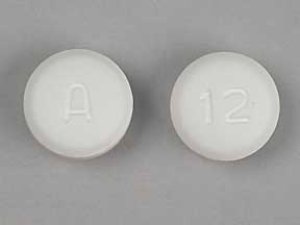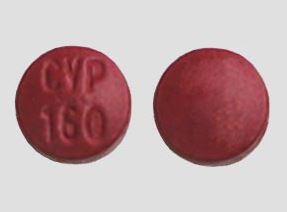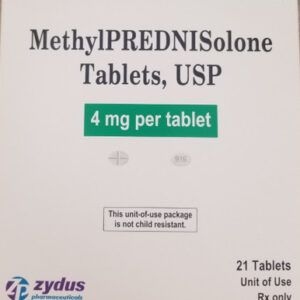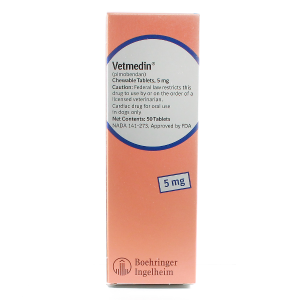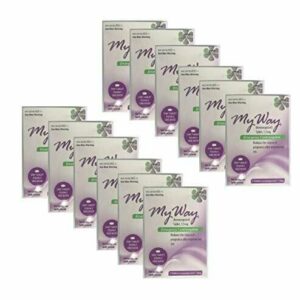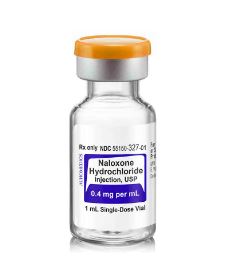Delivery Method: Via Electronic Mail – Delivery and Read Receipt Requested Reference #: 320-26-06 Product: Drugs Recipient:
Recipient Name
Mr. James Daniel Bailey
Recipient Title
Site/Plant Director
Liebel-Flarsheim Company LLC
8800 Durant Road
Raleigh, NC 27616
United States
daniel.bailey@guerbet.com Issuing Office: Center for Drug Evaluation and Research (CDER)
United States
Warning Letter 320-26-06
October 17, 2025
AMENDED
(This letter replaces Warning Letter No. 320-26-06 dated October 15, 2025.)
Dear Mr. Bailey:
The United States Food and Drug Administration (FDA) inspected your drug manufacturing facility, Liebel-Flarsheim Company LLC (a wholly owned subsidiary of Guerbet America LLC), FEI 1028892, at 8800 Durant Road, Raleigh, from March 25 to April 8, 2025.
This warning letter summarizes significant violations of Current Good Manufacturing Practice (CGMP) regulations for finished pharmaceuticals. See Title 21 Code of Federal Regulations (CFR), parts 210 and 211 (21 CFR parts 210 and 211).
Because your methods, facilities, or controls for manufacturing, processing, packing, or holding do not conform to CGMP, your drug products are adulterated within the meaning of section 501(a)(2)(B) of the Federal Food, Drug, and Cosmetic Act (FD&C Act), 21 U.S.C. 351(a)(2)(B).
We reviewed your April 25, 2025, response to our Form FDA 483 in detail and acknowledge receipt of your subsequent correspondence.
During our inspection, our investigators observed specific violations including, but not limited to, the following.
1. Your firm failed to thoroughly investigate any unexplained discrepancy or failure of a batch or any of its components to meet any of its specifications, whether or not the batch has already been distributed (21 CFR 211.192).
You manufacture terminally sterilized (b)(4) drug products including (b)(4) for parenteral administration. However, you failed to adequately investigate multiple microbial excursions for in-process drug samples, as well as out-of-specification (OOS) endotoxin results for your finished sterile drugs.
Further, your firm failed to adequately implement appropriate and effective corrective actions and preventive actions (CAPAs).
(b)(4) Bioburden Excursions
Your firm performs (b)(4) bioburden (b)(4) testing on in-process samples of your drug products (b)(4) terminal sterilization. Since 2022, despite (b)(4) steps, at least 40 (b)(4) test results exceeded your firm’s microbial action-level limits, including results of “too numerous to count” (TNTC). The bioburden included gram-negative microorganisms that may have contributed to elevated endotoxin levels. Your investigations into the excursions were inadequate and lacked scientifically justified root causes. For example, investigations stated, “root cause undetermined” or identified “personnel” or “environment” as potential sources without adequate evidence. Investigations also referenced root cause studies as part of ongoing CAPAs with completion dates through 2026.
In your response, you state that you will assign a CAPA, including an effectiveness check, to each of the failures noted and identified during the inspection. You also state the implicated batches are not at risk due to terminal sterilization.
Your response is inadequate. You failed to adequately investigate these excursions, and your risk assessment minimizes the potential impact to patients. Your assessment appears to rely on your (b)(4) sterilization process and does not consider factors impacting its effectiveness.
Appropriate environmental conditions for drug product manufacturing must be maintained to protect products from microbiological contamination, even when terminally sterilized, to minimize sterilization challenges and the byproducts of excessive bioburden.
OOS Endotoxin Failures
After terminal sterilization of your drug products, you perform endotoxin testing as part of your sterility assurance and release specifications. Your firm invalidated multiple OOS endotoxin test results for your (b)(4) and (b)(4) drug products without conducting adequate root cause investigations.
For example, your firm initiated an investigation into the OOS endotoxin result for your (b)(4) (Lot (b)(4)) drug product. After initially finding no identifiable root cause, your firm retested with new dilutions that yielded passing results and invalidated the OOS. The investigation concluded that “accidental cross-contamination of initial dilution” caused the OOS but failed to identify the contamination source. Additionally, the corrective action of providing “heightened awareness training” to the analyst contradicted the investigation’s own initial finding that the analyst and procedure were not the cause of the OOS.
Our investigators identified additional OOS endotoxin results for (b)(4) (Lot (b)(4)) and (b)(4) (Lot (b)(4)). Initial retesting confirmed the OOS results, but your firm excluded these confirmatory results, claiming the retesting was not performed per procedure. Both failures were investigated by your firm in tandem, and the investigations concluded no analyst, laboratory, or procedural root cause could be identified. However, the initial OOS results were invalidated after retesting new dilutions yielded passing results.
Your investigation of the OOS endotoxin failure for (b)(4) (Lot (b)(4)) referenced that the corresponding (b)(4) sample also failed with TNTC results. However, you concluded this was not the root cause of the endotoxin failure since all other (b)(4) bioburden samples, particulate matter testing, and sterility testing for Lot (b)(4) met specifications.
Your investigation concluded that “though the exact root cause for this OOS is unknown, the most probable root cause for this OOS result is materials.” However, your investigation is inadequate and lacked thorough root cause analysis. For example, your investigation did not confirm your conclusion by testing the suspected source of contamination (materials) to attempt to recreate the endotoxin testing failure. You also failed to evaluate the impact on other lots tested during the same timeframe. Further, you failed to implement adequate corrective actions including updated procedures or other measures to prevent recurrence.
Your firm released the above batches with OOS endotoxin failures for U.S. distribution.
In your response, you affirm that your investigation process was performed according to internal operating procedures and applicable regulations. You also state the products are acceptable based on acceptable results of confirmatory testing.
Your response is inadequate. While sterility and endotoxin testing are critical final quality controls for drug products that purport to be sterile, they should not be the sole basis for batch release. While these tests are the final step in a series of design and control measures intended to protect consumers from unsafe drug products, there are limitations to sterility and endotoxin testing. For example, sample sizes are typically smaller as compared to the total number of units in a batch and they may not detect sporadic contamination issues. Over-reliance on final testing can mask problems such as inadequate terminal sterilization validation or inconsistent sterilization cycle execution for extended periods. Any sterility or endotoxin failure represents a serious CGMP issue that requires a comprehensive investigation into the cause and extent of the problem, and prompt review of your terminal sterilization process qualification status.
To ensure proper root cause analysis and appropriate CAPA implementation, investigations must be thorough, well-documented, scientifically sound, and timely.
In response to this letter, provide:
- A retrospective, independent review of all invalidated OOS (including in-process and release/stability testing) results for U.S. products currently in the U.S. market and within expiry as of the date of this letter and a report summarizing the findings of the analyses, including the following for each OOS:
o Determine whether the scientific justification and evidence relating to the invalidated OOS result conclusively or inconclusively demonstrates causative laboratory error.
o For investigations that conclusively establish laboratory root cause, provide rationale and ensure that all other laboratory methods vulnerable to the same or similar root cause are identified for remediation.
o For all OOS results found by the retrospective review to have an inconclusive or no root cause identified in the laboratory, include a thorough review of production (e.g., batch manufacturing records, adequacy of the manufacturing steps, suitability of equipment/facilities, variability of raw materials, process capability, deviation history, complaint history, batch failure history). Provide a summary of potential manufacturing root causes for each investigation, and any manufacturing operation improvements. - A comprehensive, independent assessment of your overall system for investigating deviations, discrepancies, complaints, OOS results, and failures. Provide a detailed action plan to remediate this system. Your action plan should include, but not be limited to, significant improvements in investigation competencies, scope determination, root cause evaluation, CAPA effectiveness, quality unit oversight, and written procedures. Address how your firm will ensure all phases of investigations are appropriately conducted.
- A comprehensive, independent assessment of the design and control of your firm’s manufacturing operations, with a detailed and thorough review of all microbiological hazards, that includes, but is not limited to:
o All human interactions within the ISO 5 area
o Equipment placement and ergonomics
o Air quality in the ISO 5 area and surrounding room
o Facility layout
o Raw material quality
o Personnel flows and material flows throughout all rooms used to conduct and support sterile operations - A detailed risk assessment addressing the hazards posed by distributing drug products with potentially objectionable contamination. Specify actions you will take in response to the risk assessment, such as customer notifications and product recalls.
- Complete investigations into all batches with potential objectionable microbial contamination or an OOS microbiological result (whether or not later invalidated). The investigations should detail your findings regarding the root causes of the contamination.
- Appropriate microbiological batch release specifications and standards (i.e., total counts, accompanied by provisions for identification of bioburden) for each of your drug products.
- All chemical and microbial test methods used to analyze each of your drug products.
- A summary of results from testing retain samples of all drug product batches within expiry. You should test microbiological quality (sterility and endotoxin levels) of each batch. If testing yields an OOS result, indicate the corrective actions you will take, including notifying customers and initiating recalls. In addition, identify:
o All lots with corresponding (b)(4) bioburden samples of “too numerous to count” results.
o The corresponding (b)(4) determination for each microorganism recovered in (b)(4) bioburden results exceeding your microbiological action-level limits.
2. Your firm failed to have separate or defined areas or such other control systems necessary to prevent contamination or mix-ups. Your firm also failed to use equipment in the manufacture, processing, packing, or holding of drug products that is of appropriate design, adequate size, and suitably located to facilitate operations for its intended use and for its cleaning and maintenance. (21 CFR 211.42(c) and 21 CFR 211.63)
We observed that your facility’s cleanrooms and (b)(4) system used in drug product manufacturing were in a state of disrepair.
Facility and Equipment Design and Control
Your cleanrooms (e.g., ISO 5 filling line and ISO 7 weigh and formulation rooms) were inadequately designed and maintained to facilitate adequate cleaning and proper operations. For example, excessive caulking and tape were used to repair gaps around ceiling HEPA filters, air vents, and (b)(4). Rust was observed on various pieces of equipment. Inadequate materials of construction and poor facility maintenance may create potential contamination risks.
(b)(4) System
Your firm manufactures (b)(4) used to (b)(4) your filling equipment lines and as a component in your (b)(4) drug products. However, your (b)(4) system was in a significant state of disrepair. For example, peeling insulation, excessive rust, and corrosion was observed on the (b)(4) system. In addition, leaks and pooling (b)(4) were observed at various points with at least one leaking section where (b)(4) was collecting in a bucket. These conditions can allow filth and the proliferation of microorganisms to spread throughout the manufacturing areas.
It is essential that you adequately design, control, maintain, and monitor the (b)(4) system to ensure it consistently produces (b)(4) suitable for pharmaceutical use.
Since 2019, your environmental monitoring program showed excessive microbial contamination throughout your facility, particularly in your ISO 5 filling line cleanrooms. Speciation of the isolates recovered were identified as (b)(4) microorganisms, implicating your (b)(4) system as a potential source. While you initiated CAPA and change control in 2023 and 2024 to remediate the environmental excursions, our 2025 inspection found ongoing microbial presence throughout your facility.
In your response, you commit to cleanroom reconstruction with quality assurance verification of cleanability by August 2026 and replacement of major components of your (b)(4) system by April 2027. Your response is inadequate. The proposed timelines are unacceptable to adequately address these violations, and an accelerated corrective response is required. You also do not discuss interim measures you will take to ensure your current (b)(4) system remains integral and is capable of producing (b)(4) of appropriate quality until replacement is complete.
In response to this letter, provide:
- Your CAPA plan to implement routine, vigilant operations management oversight of facilities and equipment. This plan should ensure, among other things, prompt detection of equipment/facilities performance issues, effective execution of repairs, adherence to appropriate preventive maintenance schedules, timely technological upgrades to the equipment/facility infrastructure, and improved systems for ongoing management review.
- A detailed remediation plan with timelines to address the findings of the contamination hazards risk assessment. Describe specific tangible improvements to be made to sterile processing operation design and control.
- A comprehensive, independent assessment of your (b)(4) system design, control, and maintenance.
- A thorough remediation plan to install and operate a suitable (b)(4) system. Include a robust ongoing control, maintenance, and monitoring program to ensure the remediated system design consistently produces (b)(4) adhering to (b)(4), USP monograph specifications and appropriate microbial and endotoxin limits.
- A detailed risk assessment addressing the potential effects of the observed (b)(4) system failures on the quality of all drug product lots currently in U.S. distribution. Specify actions that you will take in response to the risk assessment, such as customer notifications and product recalls.
CGMP Consultant Recommended
Based upon the nature of the violations we identified at your firm, you should engage a consultant qualified as set forth in 21 CFR 211.34 to assist your firm in meeting CGMP requirements.
Your use of a consultant does not relieve your firm’s obligation to comply with CGMP. Your firm’s executive management remains responsible for resolving all deficiencies and systemic flaws to ensure ongoing CGMP compliance.
Conclusion
The violations cited in this letter are not intended to be an all-inclusive list of violations that exist at your facility. You are responsible for investigating and determining the causes of any violations and for preventing their recurrence or the occurrence of other violations.
Correct any violations promptly. Failure to promptly and adequately address this matter may result in regulatory or legal action without further notice including, without limitation, seizure and injunction. Unresolved violations may also prevent other Federal agencies from awarding contracts.
Failure to address violations may also cause FDA to withhold issuance of Export Certificates. FDA may withhold approval of new applications or supplements listing your firm as a drug manufacturer until any violations are completely addressed and we confirm your compliance with CGMP. We may re-inspect to verify that you have completed corrective actions to address any violations.
This letter notifies you of our findings and provides you an opportunity to address the above deficiencies. After you receive this letter, respond to this office in writing within 15 working days.1 Specify what you have done to address any violations and to prevent their recurrence. In response to this letter, you may provide additional information for our consideration as we continue to assess your activities and practices. If you cannot complete corrective actions within 15 working days, state your reasons for delay and your schedule for completion.
Send your electronic reply to CDER-OC-OMQ-Communications@fda.hhs.gov. Identify your response with FEI 1028892 and ATTN: Bryce Hammer.
Sincerely,
/S/
Francis Godwin
Director
Office of Manufacturing Quality
Office of Compliance
Center for Drug Evaluation and Research
______________________
1 Under program enhancements for the Generic Drug User Fee Amendments (GDUFA) reauthorization for fiscal years (FYs) 2023-2027, also known as the GDUFA III Commitment Letter, your facility may be eligible for a Post-Warning Letter Meeting to obtain preliminary feedback from FDA on the adequacy and completeness of your corrective action plans.

 Our Pill Pass® Drug List is only $6.99 or less and Shipping is FREE!
Our Pill Pass® Drug List is only $6.99 or less and Shipping is FREE!


